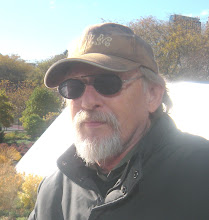Watch xma jin vs katana in Educational | View More Free Videos Online at Veoh.com
If for some reason (blogger?) this doesn't play, go to http://www.casttv.com/video/erg5q31/xma-fights-xma-jin-vs-katana-video
Otherwise, the Youtube version is: http://www.youtube.com/watch?v=nZtkwjboRDw&feature=related
A while back I blogged about what I called "Virtual Volumes": some still photographs I took with a held-open shutter of me doing the form in the dark wearing "rave gloves" which had flashing LEDs on the tips of the fingers and thumb. I was excited about what I learned about the form by creating this visualization of an external envelope, if you will, tracing the path my fingers made. I made me focus on what that path might look like while I practiced in a well lit room and so I became more aware of the arcs and the relaxed limbs that are so important to correct Tai Chi form.
I stumbled across this video and liked the effect of the streaming path from the tip of the sword coupled with the full movement of the body. Why the skeletal overlay, I don;t know, but as today is Halloween, I suppose it's appropriate. If you do look at the Youtube version(s) you'll see a lot of inane comments (some should probably be censored) about whether the Japanese Katana could beat the Chinese Jian. Both cultures tried to conquer each other back in the day, so it is an interesting question.
The Katana is a saber and good for chopping and slashng while the Jian is a highly sharpened thrusting and piercing weapon, light and easy to manipulate. When the Jian is associated with Tai Chi forms the contest between it and the Katana is pretty much a contest between the internal martial arts and the external. As the narration suggests, it is brute force against athletic ability. I have to wish, however, that the video had gone a little further into the Tai Chi aspects of the sword. Fencing isn't just a bunch of dodging around and stabbing. The Tai Chi principle of "sticking" is paramount.
Watch this video of Chen Man Ching's sword class as he fences with a student. http://www.youtube.com/watch?v=DwFTHa_TtlE&feature=results_main&playnext=1&list=PLA64BD325DB2D825C You can readily see the how he follows the energy of his opponent and redirects it to move her into a vulnerable position. It is very akin to Push Hands. Chen Man Ching moves effortlessly and applies no pressure against his opponent's sword.




